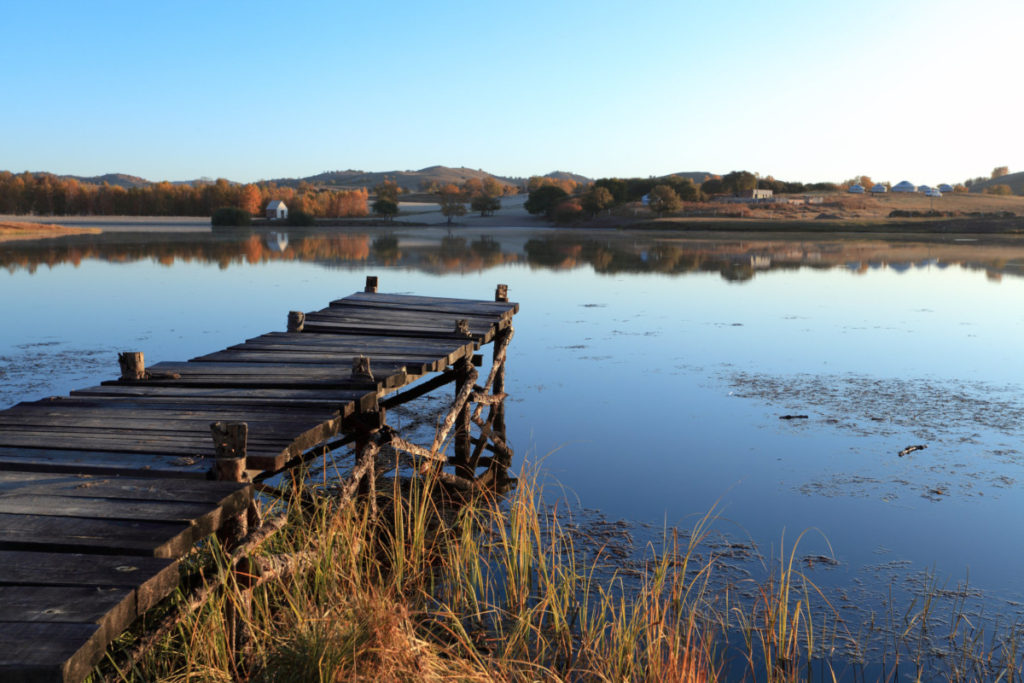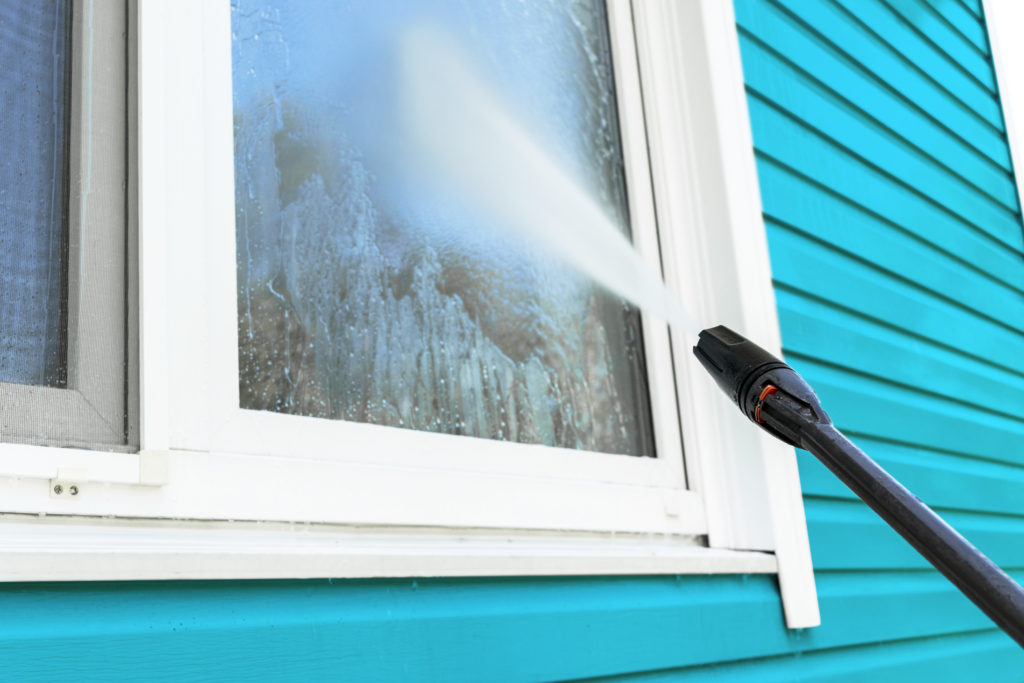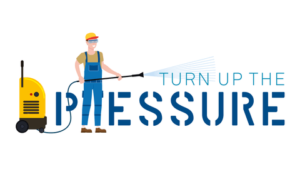
Lakes: as the story goes, they’re absolutely full of water. Theoretically, there should be very little stopping you from using that water for your own purposes, like blasting water at high speed through a pressure washer. The question is, is it feasible to use a lake to supply water to your pressure washer.
You definitely can draw water from a lake to use in a pressure washer. In most situations you’ll just need a simple pump and filter to prevent damage to your pressure washer.
Here is exactly how to set up your pressure washer to be able to use it with water from the lake.
Make Sure You’re Allowed To Use the Lake Water
In some places local governments or even private companies control access to the lake. Whoever owns or controls the lake makes the rules. While there’s probably plenty of water for everyone to use, it’s best to respect even really silly rules or laws.
So just check whether or not use of the lake is allowed either by calling the local authority’s office and asking or going online and checking to see if they’ve written anything on their website. And of course, respect any signage at the lake itself. Private property is often marked and lakes with controlled access often have posted rules.
Now that we have the disclaimer out of the way, let’s get to the actual process.
1. Set up a Pump to Supply Water to Your Pressure Washer
A lot of people will try and run their pressure washer off of straight lake water using only the washer’s built-in pump. But that’s actually pretty risky, and could destroy your pressure washer.
The scenario where this does work is where you can have the pressure washer itself close to the lake, but lower in elevation than the water level. The reason is that the pump in your pressure washer can’t pull water from the lake if the hose between the lake and pressure washer isn’t completely full of water.
If there’s much air in the line, then the pump won’t keep pulling water, and running the pump dry could cause cavitation which can break the pump really quickly.
But if you can run the pressure washer downhill from the surface of the lake, then you can fill the hose with water and use the drop in elevation to keep a steady flow of water going to the pressure washer.
However, this isn’t exactly the typical case. Usually, you’ll be using the pressure washer on the dock or on the ground that’s usually higher in elevation than the surface of the water.
So to prevent damage, we’ll use a pump to move the water out of the lake and supply it consistently to the pressure washer.
The best pumps for this are submersible pumps. I bought this Superior Pump (affiliate link) off of Amazon specifically for pumping water out of lakes and streams. I definitely recommend it as the best option I could find for the price. It cost me less than $60, which was absolutely work it to not destroy my pressure washer which cost a lot more.
When you’re choosing your pump it’s important to make sure that it can supply at least as much water as your pressure washer uses.
For example, the pressure washer I use the most uses 2.3 GPM (gallons per minute). My 1/4 HP pump supplies up to 1,800 GPH (gallons per hour) which translates to 30 GPM. The amount of water the pump can supply depends on how far uphill it has to pump, so to be safe, you can use a stopwatch to time how long it takes to fill a bucket and calculate the flow.
For example, if it takes 1 minute, 36 seconds (96 seconds) to fill a 5-gallon bucket, then we first convert to minutes in decimals by dividing 96 by 60.
96 ÷ 60 = 1.6
So 1 minute, 36 seconds equals 1.6 minutes. Then we take the size of the bucket in gallons (5) and divide it by the number of minutes.
5 ÷ 1.6 = 3.125
Knowing that the pump is supplying 3.125 GPM to the location where I plan to use my pressure washer, I can confidently use my 2.3 GPM pressure there.
If your pump’s GPM isn’t high enough, the pressure washer won’t be able to sustain the amount of pressure that it usually does. This will make it less effective, and could damage it if it causes it to run dry.
2. Filter Out Silt and Other Debris
Silt and sand can be abrasive for both the hose that leads up to your washer and the washer itself. If there’s too much of it, or any other debris, it can even damage or completely ruin your pressure washer.
Because of this, it’s important to filter out debris so it won’t be a problem, even if the water in your lake looks pretty clear.
This pump I recommend (affiliate link) does have a filter screen for larger debris, but the pump is designed to handle anything smaller than 1/8 inch. But your pressure washer isn’t.
One way to minimize silt, sand, or any other debris going through this is to actually set the pump inside a 5-gallon bucket, then filling the bucket with cleaner water from the lake’s surface, then lowering the bucket to the ground. If the top of the bucket is lower than the water’s surface, then as you run your pump and pressure washer, the bucket will refill with water that will have less silt in it than if you ran it right on the ground.
Even so, I strongly recommend filtering the water before it gets to your pressure washer.
I bought this filter (affiliate link) also off of Amazon. It’s specifically for using with a pressure washer, so it filters out things that would be too big to go through a pressure washer. It added so little to the cost of my setup and, again, is going to protect my pressure washer, which is the most expensive component of this whole setup.
I actually just connect this filter right to the top of the pump, but you can also attach it to the pressure washer inlet.
3. Run a Hose From the Lake to Your Pressure Washer
At this point, we’ll connect a hose to run from the pump and filter over to your pressure washer. The hose connects to either the pump outlet or the filter outlet (if you connected the filter directly to the pump) exactly like you would connect a hose to a hose bib at your house.
A regular garden hose will do the job for this, since the pressure from the submersible pump falls well within the working range of a typical garden hose.
Now run the pump until water starts coming out the other end of the hose, then turn it back off. That way the hose is at least mostly filled with water when you connect it to the pressure washer.
Now connect the other end of the hose to the inlet hose of your pressure washer.
If you’re using your pressure washer right by the lake where your pump is, you may be able to use the supply hose for the pressure washer directly on the pump or filter outlet.
4. Run the Pump First to Get Out the Air
The most expensive part of this whole system is the pressure washer itself.
A pressure washer’s pump, however, is prone to damage from even a small amount of air that gets into it. So it’s important that before you start the pressure washer, you have the water running steadily to the pressure washer.
This is an important rule of thumb for any time you’re using a pressure washer, but especially with a none-standard water source.
5. Start the Pressure Washer and Use it like Normal

You’re ready to go! Your pressure washer is now fully equipped to run using lake water. Now, just follow the normal operating instructions for your pressure washer. Whether it’s gas or electric, you can start it up and start spraying.
Still, there are a few things you should watch out for. Since your water supply is different from what your pressure washer was designed for, there are a few things you should watch out for.
Potential Issues and How to Fix Them
Here are a few symptoms you should watch out for to make sure that you aren’t hurting your pressure washer:
Sputtering
If your pressure washer starts sputtering, so water isn’t coming out steadily,this could indicate a clog somewhere or that you don’t have enough water getting to the pressure washer inlet.
If you have a clog, it’s most likely at one of the filters. You should turn off the pressure washer right away. Then, go check each filter. There’s often a filter or even just a little filter screen at the inlet of the pressure washer itself. It’s likely, though, that either your main filter that we installed after the pump, or the screen on the inlet side of the pump, is clogged.
If you find that there’s debris on at any of these locations, just clear it away and you’re ready to get started again.
If there isn’t debris, it’s possible that there’s not enough water getting to your pressure washer, which means your pressure washer is probably too far uphill or too far away from the pump. You need to move it closer, or get a stronger pump.
Low Pressure
There’s a few things that could cause low pressure here, but the most likely one is elevation change between the lake and the washer, or the washer and the end of the hose.
The more you go up in elevation, the more work your pumps have to do and the less pressure you get at the outlet of your pressure washer. For each foot of elevation gain you lose 0.43 PSI (plus a little more due to friction between the water and the inside of the hose).
It could also caused by partial clogging or blockage of a filter.
If the pressure seems low from the start, it’s mostly likely the elevation gain, in which case you’re going to need a more powerful pump to make sure you’re getting plenty of water pressure to the pressure washer.
If the pressure started out okay but got worse after use, you’re probably losing pressure because of a partial blockage. Check each filter location and clear out any gunk or debris that’s blocking your filter.
